Features
‘Sinhala Buddhist nationalism vs. liberal civil society’ debate on the left
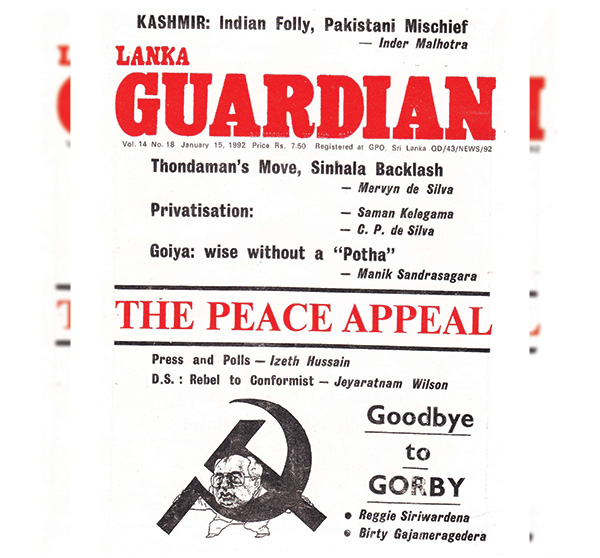
By DR. DAYAN JAYATILLEKA
For a country with a deep crisis, galloping poverty and a very significant Left (JVP-NPP and FSP), there is a paradoxically thin contribution by the leftwing intelligentsia. This can be contrasted by a cursory glance at the volumes of back issues of the Lanka Guardian which would illustrate the far thicker contribution by leftwing intellectuals in the 1980s (not to mention earlier decades).
Another contrast between today and the 1980s is that there are hardly any debates on the political Left, though the conspicuous Left formations could do them.
Left Debate
Therefore, the current contribution by the left intellectuals has to be greatly valued. I refer (in no particular order) to Kumar David, Ahilan Kadirgamar, Devaka Gunawardena, Uditha Devapriya, Shiran Ilanperuma and Kanishka Gunawardena. I would have included Kusum Wijetilleke, whose contribution is stellar but would qualify more as progressive or ‘left-leaning’ than ‘leftist’ in terms of his concerns and framework.
Kumar David is seniormost and sui generis, Ahilan writes regularly and invaluably on economics. Kanishka writes all too infrequently.
This leaves the troika of Devaka-Uditha-Shiran to debate political issues from a left perspective. Despite their palpable intelligence, the fact that you don’t need the fingers of even one hand to count these left intellectuals who write for publication in English is a sad state of affairs, given the volume of thinking-through the Left needs to do and is not being done.
Over several weeks Devaka, Shiran and Uditha have been engaged in a most important debate over a cluster of related issues. These include Sinhala Buddhist nationalism, liberal civil society and anti-imperialism.
Each writer has tried to grapple with each of these issues but running like a subterranean stream beneath it all is a debate, more implicit than explicit, on a progressive political perspective and left strategy.
I am not saying that the attempt of each of these writers to come to grips with each of these issues is but a screen for a polemic on strategy. I am saying that these intrinsically valuable explorations of each subject and the attempt to construct a framework for oneself and others, also has an important dimension of political strategy and therefore an enhanced value.
I may be engaged in oversimplification or simply in error, but it seems to me that the underlying question is: “which is more reactionary, Sinhala Buddhist nationalism or liberal civil society, and how do – how should – each of these phenomena figure in an anti-imperialist politics?”
The question seems to constitute an intractable conundrum, but perhaps that because of the way it is looked at.
Dialectical-Historical Method
To my mind, the Gordian Knot can be cut by a what Georg Lukacs calls the ‘dialectical-historical’ method.
The dialectical part would consist of an acknowledgement that none of these phenomena are monolithic and unearthing the essential contradiction within each phenomenon.
The historical part would be to figure out which aspect of the contradictory character of the phenomenon under discussion comes—or had come– to the forefront and which had receded into a secondary place, at which period of history and, upon closer focus, at which moment and in which situation.
In short there is no simple answer. The issue is intrinsically complex and problematic. The phenomena are also dynamic, not static, and must be viewed as such. The question must be viewed concretely. ‘Sinhala Buddhist nationalism’ when and in relation to what? Likewise, ‘liberal civil society’. This is true of that holy of holies, ‘anti-imperialism’ as well.
Slavoj Zizek was fond of repeating a humorous yet deadly serious reply by Stalin to the journalist who asked him, which is worse, the right deviation or the left deviation. Stalin replied “they are both worse”. There are times, the same answer may be true with regard to Sinhala Buddhist nationalism and liberal civil society. They are both worse.
For his part, Samir Amin was also fond of quoting a line from Stalin, from Foundations of Leninism, where he pointed out that the intrinsically reactionary ideology of a movement or personality may be less important than the role he/she/it plays in the anti-imperialist struggle. “That is why the Emir of Afghanistan is more progressive than the British Labour party” quipped Stalin, but in all seriousness.
It really depends on the larger context; on what else is happening. The framework of the debate should be widened, instead of assuming an essential, unchanging, monolithic character of any phenomenon—and issuing from that, the possibility of formulating an answer that is correct in any absolute sense.
1956 and Sinhala Nationalism
Let me conclude with two personal reference points. Firstly, my father Mervyn de Silva’s own grappling with the phenomena of SWRD Bandaranaike, Sinhala nationalism, 1956 and all that. SWRD had thrust him into the study of international affairs in his late 20s. Mervyn turned 30 the year SWRD was assassinated.
“Perhaps in the absence of a truly national and unifying pre-independence movement, Ceylonese nationalism, denied a natural birth, acquired mongrel features with the departure of the foreign ruler. Inasmuch as it was against foreign domination and foreign symbols, this nationalism historically speaking, was normal. But when it focused on the Tamil minority, a community identified as the favoured child of colonial policies, it was racist.”
(‘April Anniversaries’, Teilhard de Chardin lecture, Lanka Guardian April 1981)
Mervyn was not a Marxist dialectician but a literary critic with an advanced sensibility, even as a youth, according to Godfrey Gunatilleke. The lesson is that what is most important is not to rush to judgment but to wrestle with and comprehend.
Neo-Fascism and Nationalism
Secondly, here is an extended quote from something I wrote on Sinhala nationalism.
“…In 1985 the World Festival of Youth and Students was addressed by two old time revolutionary heroes. One was Miguel Marmol, a leader of the 1933 communist uprising in El Salvador, led by the iconic Farabundo Marti. The other was Kurt Julius Goldstein, German Jewish Communist, veteran of the Spanish Civil War, survivor of Auschwitz and Buchenwald, as well as the notorious ‘Death March’, and the head of the World Federation of Anti-Fascist Resistance Fighters. My extended conversation with Goldstein was two years after July ’83 and I asked him what the main lessons were that he drew from his experiences and those of his heroic comrades. I asked him the main mistakes the antifascists of the 1930s made, the mistakes that he would not repeat if he were put on a time machine. I recorded his answer in the Lanka Guardian of that time.
He said that the biggest error the Left made was to confuse nationalism, chauvinism and fascism: “we should have united with nationalism, even chauvinism, to fight fascism; instead of which we treated them as all the same”. He said– and I published it at the time– that they, the Left of that day, confused nationalism, populism and chauvinism with fascism, and that they should have differentiated between these and fascism, adopting a strategy of uniting or working with all those diverse (even unsavory) elements of an anti-status quo orientation who could be united, neutralizing those who could not, and identifying, isolating and targeting the fascists.
He said the Left was insensitive to the grievances of those misguided social forces and did not know how to approach them– which opened the space for fascist appeals to resonate and monopolize. I believe the same mistakes should not be repeated today. One must not fail to grapple with, and adopt a new approach, to the phenomena of nationalism and patriotism, including Sinhala nationalism and patriotism.
…Sinhala-Buddhism as such is too old, rooted, broad and organic to be frontally confronted and ruptured with. Instead, it must be externally contained and countervailed; its plasticity recognized; it must be internally reworked, re-calibrated, re-set and re-assembled so as to fairly and justly accommodate multi-ethnicity, multi-religiosity, multilingualism and multiculturalism, i.e., pluralism. The gap between the interests of the Sinhalese, including the Sinhala Buddhists, and the extreme, sectarian versions of Sinhala Buddhism, must be exposed, highlighted and utilized to combat the latter…
…Sinhala fascism cannot be defeated by frontally opposing Sinhala Buddhism or Sinhala nationalism as such. Nor can it be defeated outside of a national-democratic strategy to build a united Sri Lankan nation and state, resisting external interventionism and Tamil secessionism. This means a patriotic, popular-democratic platform, but may well require the adoption of a populist and patriotic one which includes a nationalist plank…” (How To & How Not To Fight Future Fascism – Colombo Telegraph)
Operative Implications and Conclusions
I’m not saying I’d draw the same conclusion today or phrase it in exactly the same way, but as the Ranil regime hardens into an election-killing ‘dependent authoritarianism’ or even ‘dependent neo-fascism’, I do want to share what Kurt Julius Goldstein told me and what I made of it. I hope it helps the current discussion among young Left intellectuals.
None of this should this be read as any kind of defence of the Uttara Lanka bloc in which the social chauvinists, xenophobes and conspiracy theorists are the head not the tail (the latter is composed of genuinely left parties).
The Uttara Lanka leadership’s indictment of the Aragalaya as an imperialist plot is wildly lunatic as it would have been had Lenin denounced the abortive 1905 revolution as reactionary because the triggering event was a massacre of a procession led by Father Gapon (in fact Lenin wrote warmly about him and militantly intervened in support of the ensuing 1905 armed uprising), or worse still, the Russian Revolution of 1917 is classified a ‘Colour Revolution’ because Lenin arrived at the Finland station on a sealed train provided by the German imperialists who were at war with Russia!
Reason, universality and modernity must be the philosophical base (but exceptionally, not perhaps the exclusive component) of any values and ideology that lead and guide a progressive bloc.
I would only suggest that debates among left intellectuals be informed by the spirit of intervention in the concrete conjuncture and aimed at impacting the practice of the actually existing Left(s)— NPP-JVP, FSP-IUSF and CPSL and DLF. What’s missing in the current debates is the operative bottom-line, however provisional.
Features
US foreign policy-making enters critical phase as fascist threat heightens globally
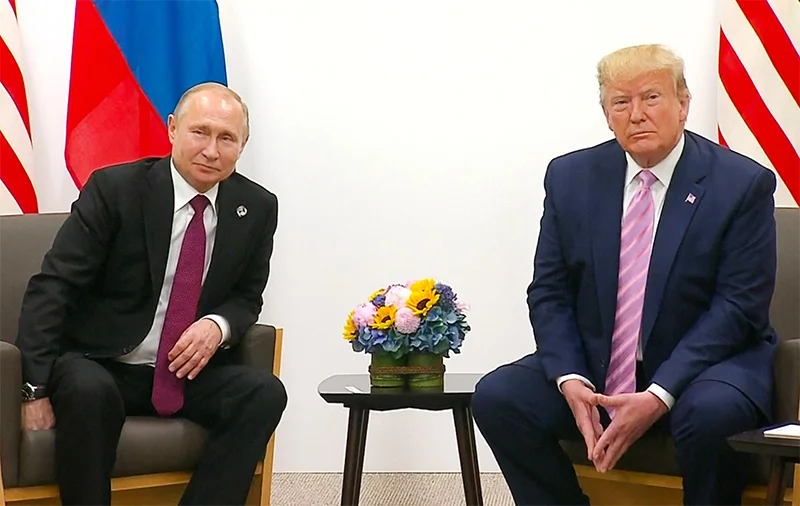
 It could be quite premature to claim that the US has closed ranks completely with the world’s foremost fascist states: Russia, China and North Korea. But there is no denying that the US is breaking with tradition and perceiving commonality of policy orientation with the mentioned authoritarian states of the East rather than with Europe and its major democracies at present.
It could be quite premature to claim that the US has closed ranks completely with the world’s foremost fascist states: Russia, China and North Korea. But there is no denying that the US is breaking with tradition and perceiving commonality of policy orientation with the mentioned authoritarian states of the East rather than with Europe and its major democracies at present.
Increasingly, it is seemingly becoming evident that the common characterization of the US as the ‘world’s mightiest democracy’, could be a gross misnomer. Moreover, the simple fact that the US is refraining from naming Russia as the aggressor in the Russia-Ukraine conflict and its refusal to perceive Ukraine’s sovereignty as having been violated by Russia, proves that US foreign policy is undergoing a substantive overhaul, as it were. In fact, one could not be faulted, given this backdrop, for seeing the US under President Donald Trump as compromising its democratic credentials very substantially.
Yet, it could be far too early to state that in the traditional East-West polarity in world politics, that the US is now squarely and conclusively with the Eastern camp that comprises in the main, China and Russia. At present, the US is adopting an arguably more nuanced approach to foreign policy formulation and the most recent UN Security Council resolution on Ukraine bears this out to a degree. For instance, the UN resolution in question reportedly ‘calls for a rapid end to the war without naming Russia as the aggressor.’
That is, the onus is being placed on only Ukraine to facilitate an end to the war, whereas Russia too has an obligation to do likewise. But it is plain that the US is reflecting an eagerness in such pronouncements to see an end to the Ukraine conflict. It is clearly not for a prolongation of the wasting war. It could be argued that a negotiated settlement is being given a try, despite current international polarizations.
However, the US could act constructively in the crisis by urging Russia as well to ensure an end to the conflict, now that there is some seemingly friendly rapport between Trump and Putin.
However, more fundamentally, if the US does not see Ukraine’s sovereignty as having been violated by Russia as a result of the latter’s invasion, we are having a situation wherein the fundamental tenets of International Law are going unrecognized by the US. That is, international disorder and lawlessness are being winked at by the US.
It follows that, right now, the US is in cahoots with those powers that are acting autocratically and arbitrarily in international politics rather than with the most democratically vibrant states of the West, although a facile lumping together of the US, Russia and China, is yet not possible.
It is primarily up to the US voting public to take clear cognizance of these developments, draw the necessary inferences and to act on them. Right now, nothing substantive could be done by the US voter to put things right, so to speak, since mid-term US elections are due only next year. But there is ample time for the voting public to put the correct perspective on these fast-breaking developments, internationally and domestically, and to put their vote to good use in upcoming polls and such like democratic exercises. They would be acting in the interest of democracy worldwide by doing so.
More specifically it is up to Donald Trump’s Republican voter base to see the damage that is being done by the present administration to the US’ standing as the ‘world’s mightiest democracy’. They need to bring pressure on Trump and his ‘inner cabinet’ to change course and restore the reputation of their country as the foremost democracy. In the absence of such action it is the US citizenry that would face the consequences of Trump’s policy indiscretions.
Meanwhile, the political Opposition in the US too needs to get its act together, so to speak, and pressure the Trump administration into doing what is needed to get the US back to the relevant policy track. Needless to say, the Democratic Party would need to lead from the front in these efforts.
While, in the foreign policy field the US under President Trump could be said to be acting with a degree of ambivalence and ambiguity currently, in the area of domestic policy it is making it all to plain that it intends to traverse a fascistic course. As has been proved over the past two months, white supremacy is being made the cardinal principle of domestic governance.
Trump has made it clear, for example, that his administration would be close to ethnic chauvinists, such as the controversial Ku Klux Klan, and religious extremists. By unceremoniously rolling back the ‘diversity programs’ that have hitherto helped define the political culture of the US, the Trump administration is making no bones of the fact that ethnic reconciliation would not be among the government’s priorities. The steady undermining of USAID and its main programs worldwide is sufficient proof of this. Thus the basis has been adequately established for the flourishing of fascism and authoritarianism.
Yet, the US currently reflects a complex awareness of foreign policy questions despite having the international community wondering whether it is sealing a permanent alliance with the main powers of the East. For instance, President Trump is currently in conversation on matters in the external relations sphere that are proving vital with the West’s principal leaders. For example, he has spoken to President Emmanuel Macron of France and is due to meet Prime Minister Keir Starmer of the UK.
Obviously, the US is aware that it cannot ‘go it alone’ in resolving currently outstanding issues in external relations, such as the Ukraine question. There is a clear recognition that the latter and many more issues require a collaborative approach.
Besides, the Trump administration realizes that it cannot pose as a ‘first among equals’, given the complexities at ground level. It sees that given the collective strength of the rest of the West that a joint approach to problem solving cannot be avoided. This is particularly so in the case of Ukraine.
The most major powers of the West are no ‘pushovers’ and Germany, under a possibly Christian Democratic Union-led alliance in the future, has indicated as much. It has already implied that it would not be playing second fiddle to the US. Accordingly, the US is likely to steer clear of simplistic thinking in the formulation of foreign policy, going forward.
Features
Clean Sri Lanka – hiccups and remedies
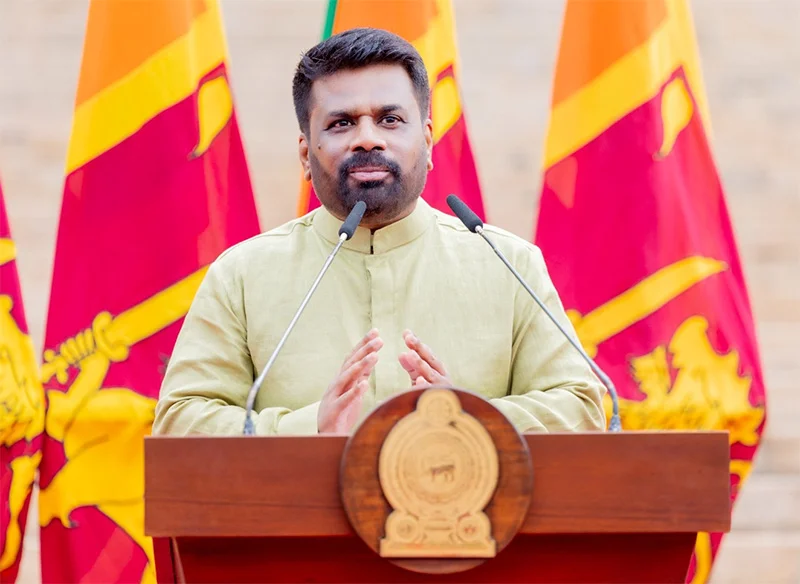
by Upali Gamakumara,
Upali.gamakumara@gmail.com
The Clean Sri Lanka (CSL) is a project for the true renaissance the NPP government launched, the success of which would gain world recognition. It is about more than just cleaning up places. Its broader objectives are to make places attractive and happy for people who visit or use services in the country, focusing more on the services in public institutions and organisations like the SLTB. Unfortunately, these broader objectives are not apparent in its theme, “Clean Sri Lanka,” and therefore there is a misconception that keeping the environment clean is the main focus.
People who realise the said broader objectives are excited about a cleaner Sri Lanka, hoping the President and the government will tackle this, the way they are planning to solve other big problems like the economy and poverty. However, they do not see themselves as part of the solution.
From the management perspective, the CSL has a strategic plan that is not declared in that manner. When looking at the government policies, one can perceive its presence, the vision being “A Prosperous Nation and a Beautiful Life,” the mission “Clean Sri Lanka” and the broader objectives “a disciplined society, effective services, and a cleaner environment.” If the government published these as the strategy, there would have been a better understanding.
Retaining the spirit and expectations and continuing the ‘Clean Sri Lanka’ project is equally important as much as understanding its deep idea. For this, it needs to motivate people, which differs from those motivators that people push to achieve selfish targets. The motivation we need here is to evolve something involuntarily, known as Drivers. Drivers push for the survival of the evolution or development of any entity. We see the absence of apparent Drivers in the CSL project as a weakness that leads to sporadic hiccups and free flow.
Drivers of Evolution
Drivers vary according to the nature of envisaged evolution for progress. However, we suggest that ‘the force that pushes anything to evolve’ would fit all evolutions. Some examples are: ‘Fitting to survival’ was the driver of the evolution of life. Magnetism is a driver for the unprecedented development of physics – young Einstein was driven to enquire about the ‘attraction’ of magnets, eventually making him the greatest scientist of the 20th century.
Leadership is a Driver. It is essential but do not push an evolution continually as they are not sprung within a system involuntarily. This is one of the reasons why CSL has lost the vigour it had at its inception.
CSL is a teamwork. It needs ‘Drives’ for cohesion and to push forward continually, like the Quality Improvement Project of the National Health Service (NHS) in England. Their drivers are outlined differently keeping Aims as their top driver and saying: Aims should be specific and measurable, not merely to “improve” or “reduce,” engage stakeholders to define the aim of the improvement project and a clear aim to identify outcome measures.
So, we think that CSL needs Aims as defined by NHS, built by stakeholder participation to help refine the project for continuous evolution. This approach is similar to Deming’s Cycle for continual improvement. Further, two more important drivers are needed for the CSL project. That is Attitudinal Change and Punishment. We shall discuss these in detail under Psychoactive Environment (pSE) below.
Aside from the above, Competition is another driver in the business world. This helps achieve CSL objectives in the private sector. We can see how this Driver pushes, with the spread of the Supermarket chains, the evolution of small and medium retail shops to supermarket level, and in the private banks and hospitals, achieving broader objectives of CSL; a cleaner environment, disciplined behaviuor, efficient service, and the instillation of ethics.
The readers can now understand the importance of Drivers pushing any project.
Three Types of Entities and Their Drives
We understand, that to do the transformation that CSL expects, we need to identify or adopt the drivers separately to suit the three types of entities we have in the country.
Type I entities are the independent entities that struggle for their existence and force them to adopt drivers involuntarily. They are private sector entities, and their drivers are the commitment of leadership and competition. These drivers spring up involuntarily within the entity.
Type II are the dependent entities. To spring up drivers of these entities commitment of an appointed trustee is a must. Mostly in state-owned entities, categorized as Boards, Authorities, Cooperations, and the like. Their drivers do not spring up within or involuntarily unless the leader initiates. The Government of a country also falls into this type and the emergence of drivers depends on the leader.
Type III entities have neither independent nor dependent immediate leader or trustee. They are mostly the so-called ‘Public’ places like public-toilets, public-playgrounds, and public-beaches. No team can be formed as these places are open to any, like no-man-land. Achieving CSL objectives at these entities depends on the discipline of the public or the users.
Clean Sri Lanka suffers the absence of drivers in the second and third types of entities, as the appointed persons are not trustees but temporary custodians.
The writer proposes a remedy to the last two types of entities based on the theory of pSE explained below.
Psychoactive Environment (pSE) –
The Power of Customer Attraction
Research by the writer introduced the Psychoactive Environment (pSE) concept to explain why some businesses attract more customers than others who provide the same service. Presented at the 5th Global Conference on Business and Economics at Cambridge University in 2006, the study revealed that a “vibe” influences customer attraction. This vibe, termed pSE, depends on Three Distinct Elements, which can either attract or repel customers. A positive pSE makes a business more attractive and welcoming. This concept can help develop Drivers for Type II and III entities.
pSE is not an all-inclusive solution for CSL, but it lays the foundation for building Drivers and motivating entities to keep entrants attractive and contented.
The structure of the pSE
The three distinct Elements are the Occupants, Systems, and Environment responsible for making a pSE attractive to any entity, be it a person, institution, organization, or county. Each of these elements bears three qualities named Captivators. These captivators are, in simple terms, Intelligent, Nice, and Active in their adjective forms.
pSE theorizes that if any element fails to captivate the entrant’s mood by not being Intelligent, Nice, or Active, the pSE becomes negative, repelling the entrant (customer). Conversely, the positive pSE attracts the entrants if the elements are Intelligent, Nice, and Active.
For example, think person who comes to a Government Office for some service. He sees that the employees, service, and environment are intelligent, nice, and active, and he will be delighted and contented. He will not get frustrated or have any deterioration in national productivity.
The Significance of pSE in CSL
The Elements and the Captivators are universal for any entity. Any entity can easily find its path to Evolution or Progress determined by these elements and captivators. The intangible broader objectives can be downsised to manageable targets by pSE. Achievements of these targets make the entrants happy and enhance productivity – the expectation of Clean Sri Lanka (CSL).
From the perspective of pSE, now we can redefine the Clean Sri Lanka project thus:
To make the Elements of every entity in Sri Lanka: intelligent, Nice, and Active.
How Would the pSE be A Remedy for The Sporadic Hiccups?
We have seen two possible reasons for sporadic setbacks and the discontinuity of some projects launched by the CSL. They are:
The absence of involuntary Drivers for evolvement or progress
Poor attitudes and behaviors of people and leaders
Remedy for the Absence of Drivers
Setting up a system to measure customer or beneficiary satisfaction, and setting aims can build Drivers. The East London NHS principles help build the Aims that drive type II & II entities. The system must be designed to ensure continual improvement following the Deming Cycle. This strategy will create Drivers for Type I & II entities.
This process is too long to explain here therefore we refrain from detailing.
Attitudinal Change
The most difficult task is the attitudinal and behavioural change. Yet it cannot be postponed.
Punishment as a strategy
In developed countries, we see that people are much more disciplined than in the developing countries. We in developing countries, give credit to their superior culture, mitigating ours as rudimental. The long experience and looking at this affair from a vantage point, one will understand it is not the absolute truth. Their ruthless wars in the past, rules, and severe punishment are the reasons behind this discipline. For example, anyone who fails to wear a car seatbelt properly will be fined 400 AUD, nearly 80,000 LKR!
The lesson we can learn is, that in Sri Lanka, we need strong laws and strict punishment together with a type of strategic education as follows.
Psychological Approach as a Strategy
The psychological theory of attitude formation can be used successfully if some good programmes can be designed.
All attitude formations start with life experience. Formed wrong or negative attitudes can be reversed or instilled with correct attitudes by exposure to designed life experiences. The programmes have been developed using the concepts of Hoshin Kanri, Brainstorming, Cause-and-Effect analysis, and Teamwork, in addition to London NTS Quality Improvement strategies.
The experience and good responses we received for our pSE programs conducted at several institutions prove and have built confidence in our approach. However, it was a time, when governments or organisations did not pay much attention to cultural change as CSL expects in the country.
Therefore, we believe this is a golden opportunity to take the CSL supported by the pSE concept.
Features
Visually impaired but ready to do it their way
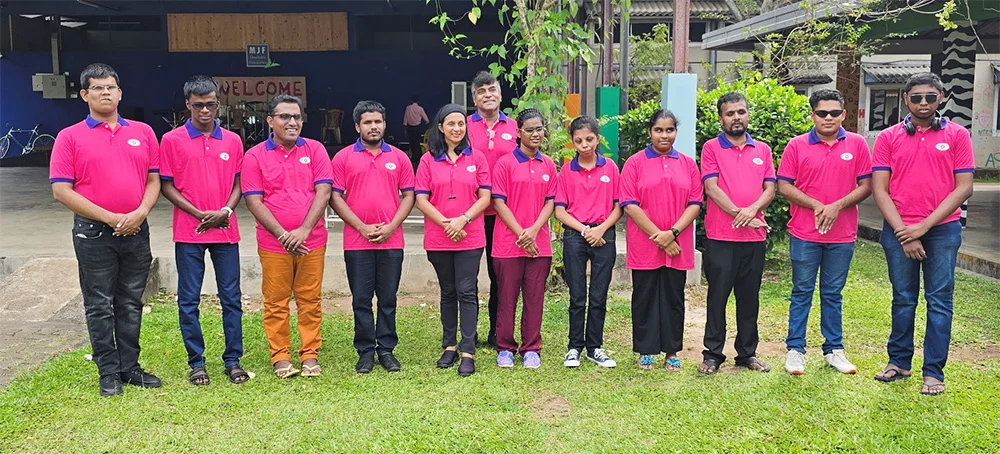
 Although they are visually impaired youngsters, under the guidance of renowned musician Melantha Perera, these talented individuals do shine bright … hence the name Bright Light.
Although they are visually impaired youngsters, under the guidance of renowned musician Melantha Perera, these talented individuals do shine bright … hence the name Bright Light.
Says Melantha: “My primary mission is to nurture their talent and ensure their sustainable growth in music, and I’m thrilled to announce that Bright Light’s first public performance is scheduled for 7th June, 2025. The venue will be the MJF Centre Auditorium in Katubadda, Moratuwa.”
Melantha went on to say that two years of teaching, online, visually impaired youngsters, from various parts of the island, wasn’t an easy ride.
There were many ups and downs but Melantha’s determination has paid off with the forming of Bright Light, and now they are gearing up to go on stage.
According to Melantha, they have come a long way in music.
“For the past few months, we have been meeting, physically, where I guide them to play as a band and now they show a very keen interest as they are getting to the depth of it. They were not exposed to English songs, but I’ve added a few English songs to widen their repertoire.
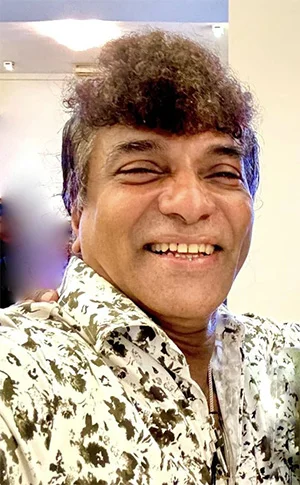
Melantha Perera: Invented a notation
system for the guitar
“On 7th June, we are opening up for the public to come and witness their talents, and I want to take this product island-wide, giving the message that we can do it, and I’m hoping to create a database so there will be a following. Initially, we would like your support by attending the show.”
Melantha says he didn’t know what he was getting into but he had confidence teaching anyone music since he has been in the scene for the past 45 years. He began teaching in 2015,
“When I opened my music school, Riversheen School of Music, the most challenging part of teaching was correcting tone deaf which is the theoretical term for those who can’t pitch a note, and also teaching students to keep timing while they sang and played.”
Melantha has even invented a notation system for the guitar which he has named ‘MelaNota’. He has received copyrights from the USA and ISO from Australia, but is yet to be recognised in Sri Lanka.
During Covid-19, Melantha showcased MelaNota online and then it was officially launched with the late Desmond De Silva playing one of his tunes, using MelaNota.
Melantha says that anyone, including the visually impaired, can play a simple melody on a guitar, within five minutes, using his notation system.
“I’ve completed the system and I’m now finalising the syllabus for the notation system.”
Melantha has written not only for the guitar, but also for drums, keyboards, and wind instruments.
For any queries, or additional information, you could contact Melantha at 071 454 4092 or via email at thebandbrightlight@gmail.com.
-

 Business3 days ago
Business3 days agoSri Lanka’s 1st Culinary Studio opened by The Hungryislander
-

 Sports4 days ago
Sports4 days agoHow Sri Lanka fumbled their Champions Trophy spot
-

 News6 days ago
News6 days agoKiller made three overseas calls while fleeing
-
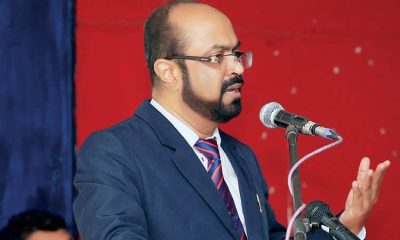
 News5 days ago
News5 days agoSC notices Power Minister and several others over FR petition alleging govt. set to incur loss exceeding Rs 3bn due to irregular tender
-

 Features4 days ago
Features4 days agoThe Murder of a Journalist
-
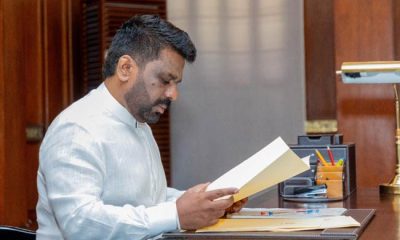
 Features4 days ago
Features4 days agoExcellent Budget by AKD, NPP Inexperience is the Government’s Enemy
-
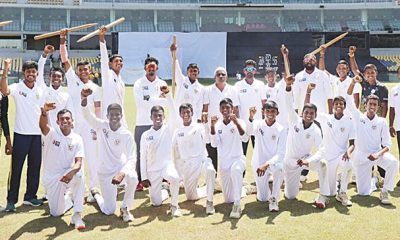
 Sports4 days ago
Sports4 days agoMahinda earn long awaited Tier ‘A’ promotion
-

 News5 days ago
News5 days agoMobile number portability to be introduced in June











